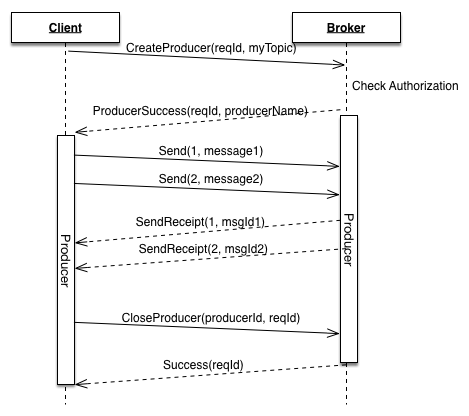You can publish to multiple topics in a single client using multiple producers in the client. However, there is a one-to-one relationship between a producer and a topic. From the documentation of the Pulsar binary protocol, Pulsar first establishes a relationship between the producer and a single topic (in a particular tenant/namespace):
message CommandProducer {
"topic" : "persistent://my-property/my-cluster/my-namespace/my-topic",
"producer_id" : 1,
"request_id" : 1
}
And when it sends messages, it references the producer ID:
message CommandSend {
"producer_id" : 1,
"sequence_id" : 0,
"num_messages" : 1
}
Because of this relationship between a producer and a topic, so to send to multiple topics, you need multiple producers.
This diagram illustrates setting up a producer and sending a message:
![enter image description here]()
Here is some Java code that illustrates multiple producers in a client to send to multiple topics:
// Create client object
PulsarClient client = PulsarClient.builder()
.serviceUrl("pulsar+ssl://useast2.aws.kafkaesque.io:6651")
.authentication(
AuthenticationFactory.token("eyJhbGciOiJS...")
)
.build();
// Create producer on a topic
Producer<byte[]> producer1 = client.newProducer()
.topic("persistent://tenant/local-useast2-aws/test-topic4")
.create();
// Create another producer on a different namespace/topic
Producer<byte[]> producer2 = client.newProducer()
.topic("persistent://tenant/namespace2/test-topic5")
.create();
// Send messages on the producers
producer1.newMessage().value("ping from producer1".getBytes()).send();
producer2.send("ping".getBytes());
// Send close the producers
producer1.close();
producer2.close();
On the consumer side, like the producer you can use multiple consumers in a client to consume from multiple topics. Or you can use a regex to associate a single consumer with multiple topics. But, yes, you will get messages from all topics matching the regex on that one consumer. BTW, you can read a great analysis of using regex to subscribe to multiple topics by Jack Vanlightly here.

